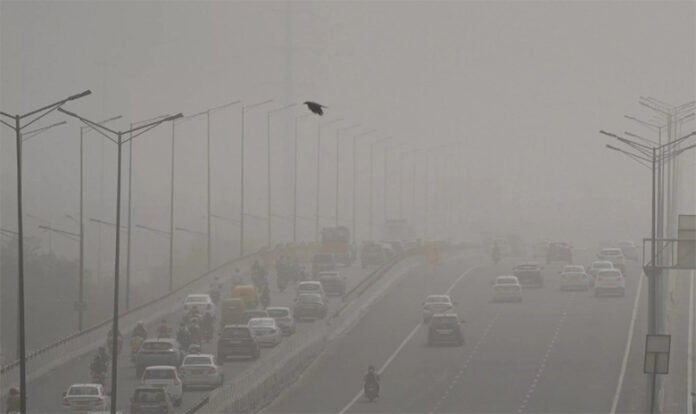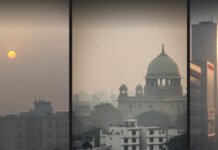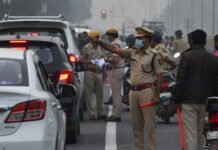New Delhi, November 15 — Delhi’s pollution levels spiked again on Friday, with the city’s overall Air Quality Index (AQI) hitting 386, signaling another day in the “very poor” category. Thick smog blanketed key arterial roads, reducing visibility and amplifying health concerns among residents.
Amid escalating pollution, the Commission for Air Quality Management (CAQM) is considering a significant upgrade to NCR’s pollution-monitoring infrastructure. The proposal includes deploying real-time dust sensors across major road networks to track particulate emissions and pinpoint pollution hotspots more accurately. Officials said the system would enable targeted interventions, especially along high-traffic corridors where dust and vehicular emissions remain major contributors.
The move comes as the capital continues to operate under GRAP Stage III restrictions. Under the current curbs, non-essential construction and demolition activities are suspended, industrial enforcement has been tightened, and agencies have been instructed to intensify mechanical sweeping and water sprinkling to suppress dust.
Health specialists warn that the deteriorating air quality poses a heightened risk to children, elderly individuals, and people with chronic respiratory and cardiac conditions. Prolonged exposure to current AQI levels may trigger breathlessness, coughing, eye irritation, and fatigue, they added.
Authorities expect the next few days to be crucial, with weather patterns likely to determine whether AQI levels improve or worsen. If conditions deteriorate further, the implementation of GRAP Stage IV measures could be considered.
Delhi’s recurring pollution surge has once again underscored the urgent need for long-term air quality reforms, even as short-term emergency measures attempt to curb the immediate impact.














